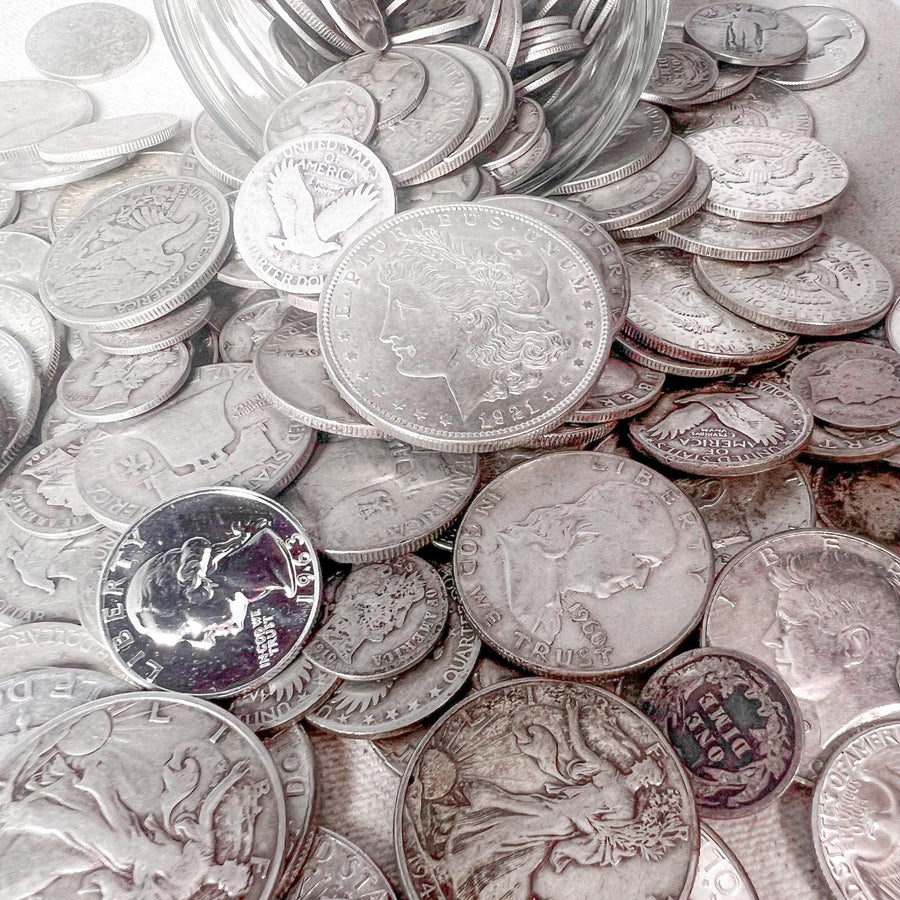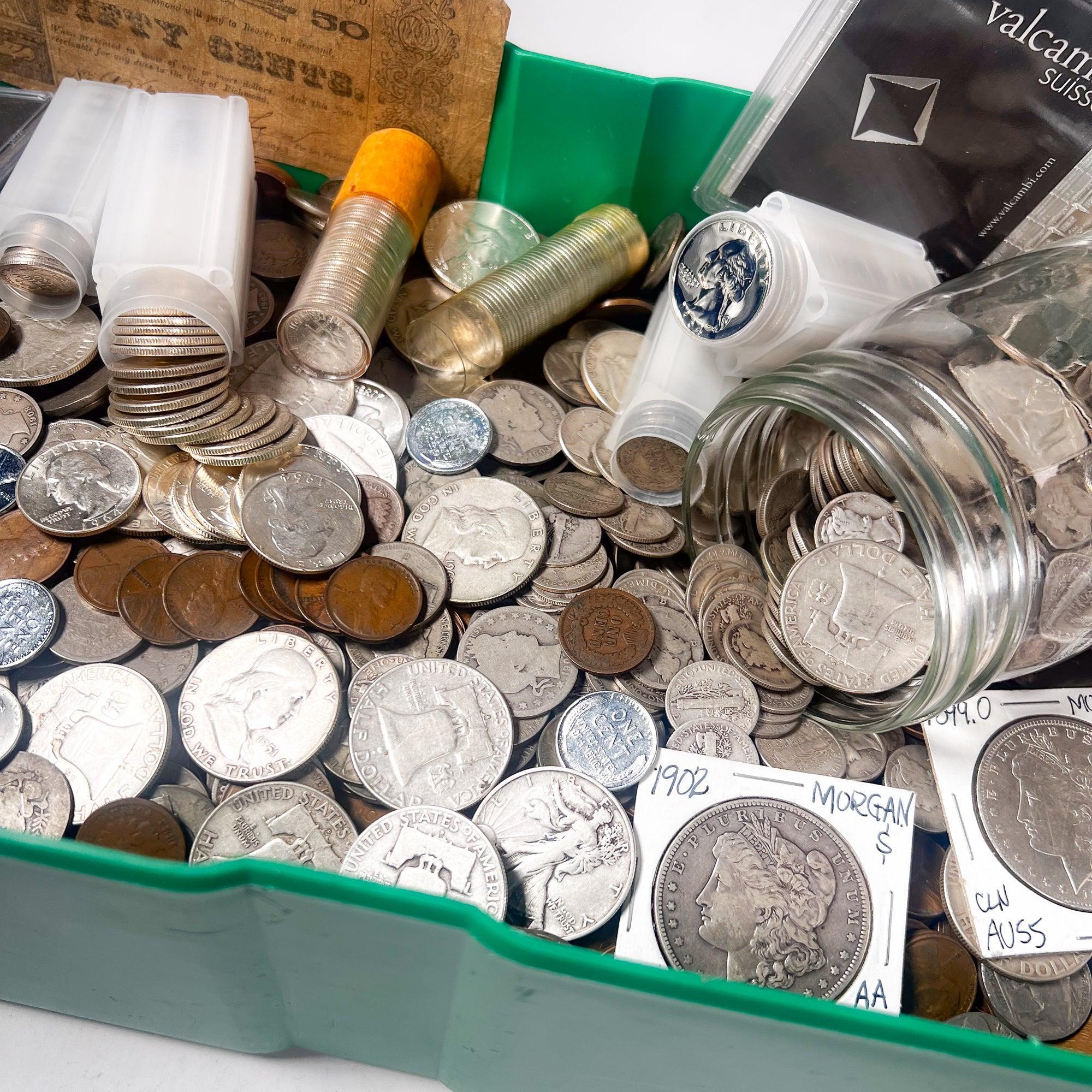What's Your Wheat Penny Worth? A Beginner's Guide to Grading and Valu
You’ve found one! An old, copper-colored penny with the iconic wheat stalks on the back. The immediate thrill is followed by a classic question: "I wonder what it's worth?" While rarity and date are huge factors, the true answer almost always comes down to one critical element: condition.
At Midwest Precious Metals Exchange, we help collectors understand the value of their coins every day. Learning the basics of coin grading is the single best skill you can develop to become a savvy collector. Let's break down how to evaluate the condition of your Wheat Pennies.
Why Does Condition Matter So Much?
Isn't an old penny just an old penny? Not in the world of numismatics! Think of it like a classic car. A rusty, dented 1957 Chevy is still a '57 Chevy, but a pristine, factory-fresh model is in a completely different league of value.
Coins are the same. A coin's grade reflects how much of its original detail and mint luster remains. A higher grade means the coin is closer to its original state, making it rarer and far more desirable to collectors. The difference in value between a heavily worn coin and an uncirculated one of the same date can be staggering—from a few cents to hundreds or even thousands of dollars.
The Language of Grading: What Do All Those Letters Mean?
Coin grading uses a specific set of terms to describe a coin's level of wear. While professional grading uses a 70-point numerical scale, you can get a great idea of your coin's condition by learning the basic adjectival grades.
Let's start with the most common grades for coins you'd find in circulation.
-
Good (G-4): Don't let the name fool you; this is a very heavily worn coin. The main design is visible, and the date and mint mark are legible, but most of the fine details are gone. The wheat stalks will be mostly smooth.
-
Very Good (VG-8): Still heavily worn, but with more detail than a "Good" coin. On a Wheat Penny, you'll start to see some of the lines in the wheat stalks.
-
Fine (F-12): The wear is obvious, but most of the major details are now clear. The lines on the top of the wheat stalks will be visible, and you can see the separation in Lincoln's hair and jawline.
-
Very Fine (VF-20): A VF coin has seen circulation but has retained sharp details. All the lines in the wheat stalks are clear, and the high points of the coin (like Lincoln's cheekbone and jaw) will show the most wear.
The Upper Echelon: Uncirculated Coins
What about coins that never made it into someone's pocket? These are the most valuable and are referred to as "Uncirculated" or "Mint State."
-
About Uncirculated (AU-50): This is a coin that's almost perfect. It may have seen the briefest moment of circulation, resulting in just a trace of wear on the highest points of the design. An AU coin will still have most of its original mint luster.
-
Uncirculated (MS-60 and up): A coin that has zero trace of wear from circulation. It is in the same condition as the day it left the mint. These coins are graded based on the presence of contact marks (or "bag marks" from being in bags with other coins), the quality of the strike, and the brilliance of the original mint luster.
What is "Mint Luster"?
Mint luster is the satiny or frosty sheen you see on a brand-new coin. It's caused by the way light reflects off the microscopic flow lines in the metal created during the striking process. As you tilt an uncirculated coin under a light, you'll see a "cartwheel" effect as the luster seems to spin. Luster is the first thing to wear off a coin in circulation, so its presence is the key indicator of an uncirculated coin.
What Tools Do I Need to Grade My Coins?
You don't need a fancy lab, just a few simple tools to get started.
-
Good Lighting: A bright desk lamp is essential. You can't grade what you can't see!
-
Magnification: A 5x or 10x jeweler's loupe or magnifying glass will help you see the fine details and subtle wear that determine a coin's grade.
-
A Soft Surface: Always handle your coins over a soft pad or cloth to prevent damage if you drop them.
Start Your Collecting Journey the Right Way
Understanding a coin's condition is your first step toward building a collection you can be proud of. It allows you to appreciate the history of each piece and make informed decisions, whether you're buying, selling, or just organizing your finds.
Ready to put your new knowledge to the test? Whether you're hunting for a high-grade key date or searching through bulk pennies for a hidden gem, we have the selection to help you on your journey.
Explore Our Collection of Wheat Pennies at Midwest Precious Metals Exchange!












